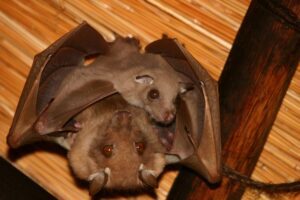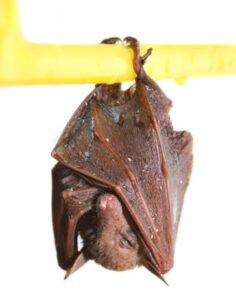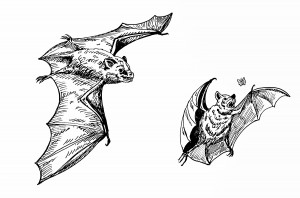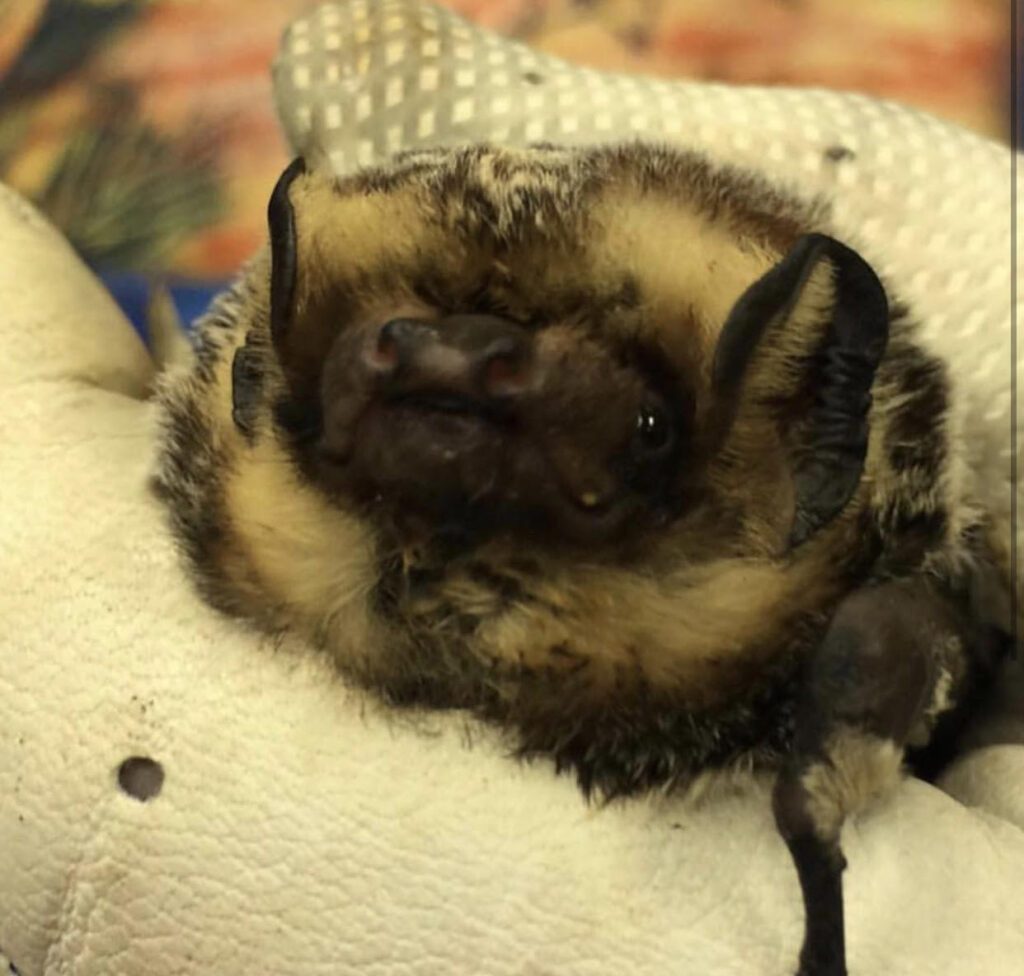What is a Bat Exclusion?
Exclusion is conducted by positioning one-way devices at key locations to allow bats to exit the structure. The one-way devices allow the bats to exit, but prevents them from re-entering. We can also use stealth-netting, (netting must be applied by professionals) so as to allow bats to exit and not reenter. We seal and bat proof in an aesthetically pleasing way. We have thousands of satisfied customers. (Check out our testimonials)
We perform Bat Exclusions in a safe and humane manner. Bats are not rodents and they are a natural pesticide. Many bats are protected and we never want to hurt or kill bats! However, we do not want bats in our homes, warehouses, buildings or structures causing damage.
We have successfully performed thousands of bat exclusions and we give a guarantee with our work!
Please note: Physically capturing bats and relocating them is almost never 
Bat Removal – Information on Frequently Asked Questions:
Maternity Season: Most bat species only have one baby a year. We cannot perform bat 
Bat Hibernation: We do not provide Bat Exclusions in the winter months while bats are hibernating. Well intentioned people bring harm to the bat species by causing too much disturbance. This is especially true in the wintertime, when bats have barely enough fat
This can run from November 1st until February depending on your location and the weather. Although no bat-proofing may be performed during this time, don’t delay! Call now to make an appointment, and we will make sure you are on the schedule to have your home bat-proofed as soon as the Hibernation season is over and it starts warming up. We will start booking appointments in February and we book up fast.
Don’t Plug Holes: Daily we gets calls in our office saying they have plugged up holes that they believe the bats are using to get in and out of the building. They waited for the bats to exit and then sealed up the area. This is never recommended as you can trap bats inside the home or building causing them to die and leading to additional problems as they take turns cycling throughout the evening hours. If you have done this please contact us right away 888-550-2287 Please note: not all bats in a roost exit each night and you can trap bats inside leading them to die!
Guano & Urine / Damage from Bats: After the bat exclusion is done and if the bats have made a mess of your building, home or structure we can perform a Remediation Service. Remediation is when we clean up all guano (feces) and affected areas. We can disinfect and clean your building using HEPA-filters. (Check out Remediation Services for more information)
Do Not Poison or Exterminate Bats: Many bats are protected and are essential to the environment. Bats, although they can make a big mess in your home or business, are extremely valuable. We will all be in serious trouble if the numbers of the bat population become drastically reduced. And the sad fact is, over half of all bat species across the nation are in trouble. This is because of many things; the closing of mines and caves, (loss of habitat) the use of pesticides, white nose syndrome, destruction of maternity colonies and poor attempts on some people’s part to do bat exclusions or even kill bats. Additionally, there is no pesticide created for use on bats. Therefore, anyone hired to use such chemicals / or products for anything except the labeled targeted pests is a violation of law.

Call our office to find out more about Bat Exclusions and for more information about our services!
A specialist is waiting to take your call!





